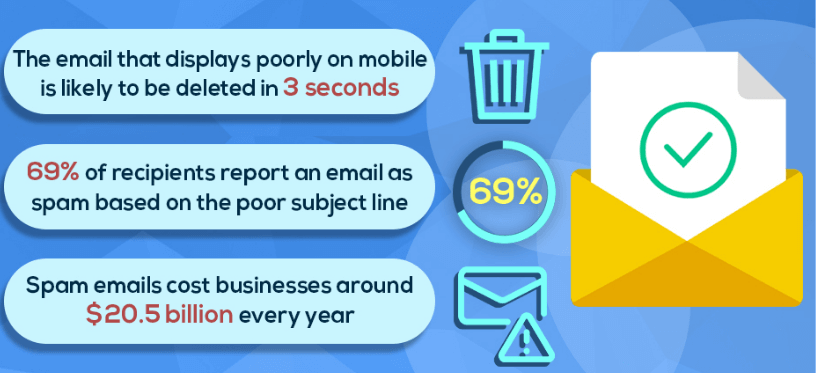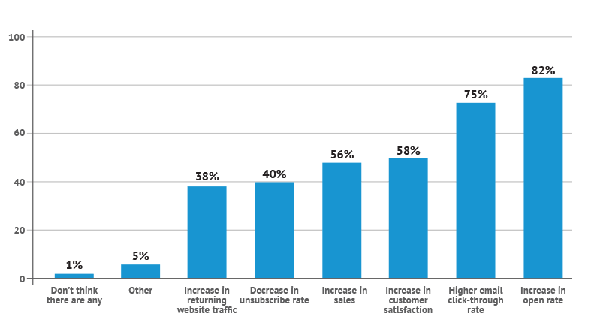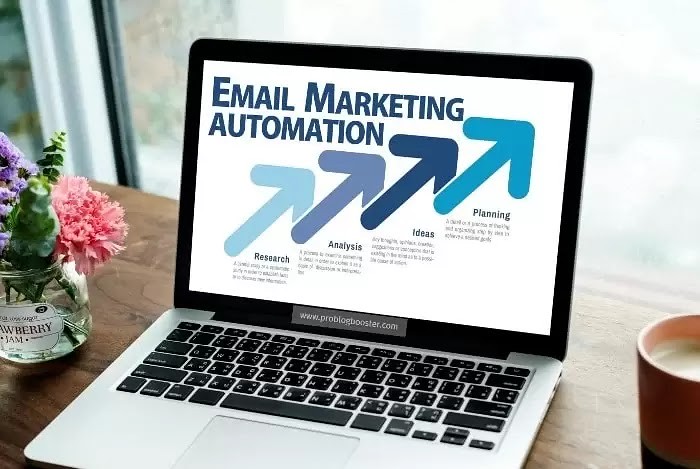Emails have been always been a major promotional source for any marketing campaign. In fact, according to a 2017 report, emails are the 3rd most powerful source of information for B2B audiences.
And, as a marketer, you have a lot on your plate. You have to worry about, from creating content that actually converts to making sure your emails are accessible as well as GDPR compliant. However, there’s one concern that every email marketers have in common- avoiding the dreaded spam folder.
Landing on your subscriber’s spam folder instead of the main inbox is a huge waste of your time and effort. Plus, it affects your online presence. While no legitimate business would mail spam content, it actually occurs quite often. According to a study, spam emails cost companies about 20.5 billion USD every year.

Table of Contents
So, Why Do Emails End Up In The Spam Box?
When it comes to email, the most crucial part that can either make or break your email marketing campaign is the email’s subject line. It’s the first thing your subscribers see while scrolling through thousands of email messages lying in their accounts.
“69% of recipients report an e-mail as scam based on the subject line alone.”
Spam filters are becoming more effective and sophisticated in helping people avoid junk emails or even dangerous emails. Email Service Providers with their spam-detection tech can now weed out any poor promotional or unsafe emails from the valuable ones.
ESPs score your emails on the basis of different variables and use that score to determine if your emails make it in their inbox. There are various aspects of emails that trigger spam detection and triggering words is one of them.
Below are 7 triggering words you need to avoid in your subject lines or email content:
1. Dear Friend
Non-personalized email is one of the primary indicators of spam. Whenever you receive an email that includes words like “Hi” or “Dear Friend”, you’re almost 100% sure you have no clue who the sender is.
If your email gets past the spam filters even if you include these words, it doesn’t mean you’re doing it right.
Personalization plays a major role in determining the success of your email campaigns. In fact, personalized emails generate more responses as compared to non-personalized emails. You want each one of your subscribers to feel like they’re receiving content that is specifically crafted for them. According to a survey, 74 percent of marketers believe that personalized emails boost customer engagement.
Takeaway: Instead of using words like “Hi” or “Dear Friend”, make sure that you always use the name of your subscribers as much as possible.

2. Free
This word is quite enticing. Besides, there isn’t a single soul who is opposed to receiving a deal that would cost little to no money. Unfortunately, this word has been used by a number of spammers.
This doesn’t mean you should avoid it completely. Using it one or two times in your email won’t be much of a deal. In fact, it would motivate your clients. However, overwhelming your email with this word will only trigger the spam detection and prevent your content from ever reaching your audience.
Takeaway: Even if you have to offer a free deal, make sure not to use this word more than twice. In doing so, you’ll prevent your email from being tagged as spam.
3. Click Here
“Click Here” is another top spam phrase you need to avoid. This phrase is a big red flag when it concerns spams and scams. Millions have made the mistake of opening emails that include such phrases and have ended up losing their money or personal files. As such, going overboard with this phrase will trigger spam filters.
Takeaway: While it’s true that “click here” is a CTA ( Call-To-Action), it’s not something you should be using in your email marketing campaigns. Instead, use a phrase that gives your subscriber an idea of the outcome of clicking on your call-to-action. For example: Schedule an appointment, Contact Us, Subscribe, Learn More, Read More, Take Our Survey, Pre-Order, etc.
4. Great Offer
Just like the word “Free”, this is another popular phrase that most scammers use to entice people. Again, as mentioned earlier, only use this phrase sparingly. Just to avoid triggering spam filters, avoid using it in your email’s subject lines.
Takeaway: Whenever you use anything related to spending money( great offer, free), make sure you don’t stuff the words throughout the email.
5. Guarantee
Everybody loves a guarantee, especially when it pertains to getting funds back or attaining great results. Unfortunately, it isn’t easy to guarantee anything and as cliché, as it may seem, “ Results may vary” is the absolute reality.
Scammers are aware that people regard the word “Guarantee” as a security blanket and that is why they use it frequently. By not using this word, you can avoid disappointing your customers, false advertisement, ruining your online presence, and ending up in your subscribers’ spam box.
Takeaway: If you aren’t 100% sure that you make a guarantee, make sure that you don’t use this word in your emails.
6. Risk-Free
This is another popular word that’s often used by scammers and spammers in conjunction with the word “guarantee.” Using this word is the same as providing your readers with a guarantee. If you can’t actually offer that, then make sure you don’t say your service or product is risk-free. Period.
Takeaway: if you can’t guarantee that the product or service you offer is actually risk-free, avoid using it in your email.
7. Re: or Fwd:
This isn’t the type of spammy words that comes to mind in email marketing. This is because people usually take such actions with their email every day. Besides, it’s not uncommon for someone to forward an interesting email to friends or respond back to an email.
Since spammers are aware of this, they use it quite often. These words are used so frequently that most people open their email almost instantly the moment they see an email’s subject line that includes these words.
Takeaway: Avoid “FWD” or “Re” if you aren’t responding back to an email sent by your subscriber.
Bottom Line
Using spammy words in emails can ultimately send your emails to your subscribers’ spam box. The aforementioned words should only be used sparingly and if possible, avoided completely in your future campaigns.
Avoiding these words will not only protect your online reputation but also the time, money and effort you put in crafting your marketing campaigns.





